Sustainability at Biltmore Estate & a Recipe for Lamb Shank Sopes
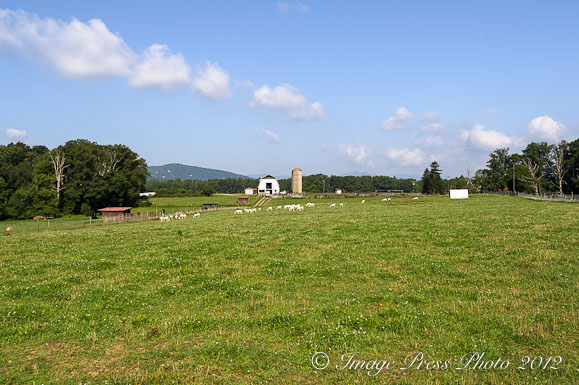
We do not inherit the land from our ancestors, we borrow it from our children. – American Indian Proverb
Sustainability. There is so much discussion in today’s society about sustainability and growing sustainable foods. You would think this is a new concept unless you understand that sustainable living and farming is what most people did until the last few generations. They lived off of their land and were self-sufficient. Our post World War II economy saw a migration away from family farms and a change to greater reliance on commercial farming that could produce more food inexpensively and be shipped long distances to consumers all around the world.
As more people have become aware of the problems associated with our food supply, they have sought out local producers, growers, and small farmers that produce higher quality foods. We want to know how that cow was treated and how it was raised. We are interested in knowing what pesticides were used on our produce. We want to buy chickens that are free-range and not confined to small cages their entire, short lives.
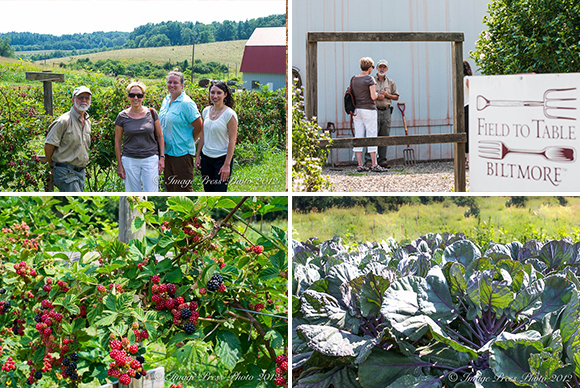
With Eli, Melonye, and Marissa at the Biltmore Farm Garden
When George Vanderbilt purchased the property for Biltmore in Asheville, North Carolina, in 1888, he envisioned a totally sustainable and self-sufficient estate where the foods that supplied their kitchens would come from their farm. George Vanderbilt raised everything from chickens to beef. They prided themselves on growing everything that was consumed on the estate. This self-sufficiency continued for many years, however, over time and with the opening of Biltmore to the public in 1930, the focus shifted. The agricultural operation became a successful dairy and it remained that way until 1983.
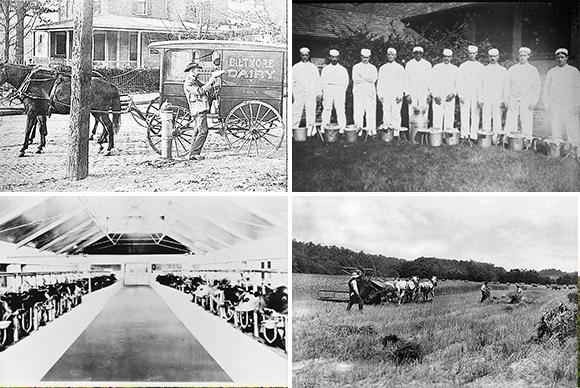
* Biltmore Dairy (circa 1939 photos)
William A. V. Cecil (George Vanderbilt’s grandson) wanted to bring back the self-sufficiency and diversity at Biltmore and made a decision to hire someone that he knew could make this vision a reality, Ted Katsigianis, Ph.D. or Dr. Ted, as he is known.
Dr. Ted is the Vice President of Agricultural and Environmental Sciences at Biltmore and received his Doctorate in Animal Science from Penn State University. Dr. Ted’s “uncle” attended Harvard with William Cecil and were best friends. This personal connection led to Dr. Ted being hired 29 years ago to transition the property away from the commercial dairy operation to a self-sustaining agricultural program, as Mr. Vanderbilt had originally intended.
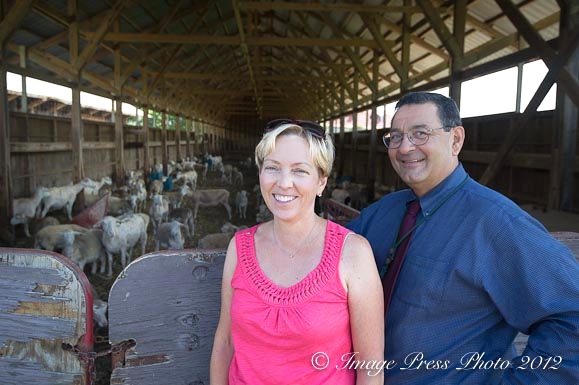
With Dr. Ted
When Dr. Ted arrived in Asheville, from his position on the Faculty at the University of Maryland, he told us, “Local was not a big deal at the time.” While the concept had taken off in states like California, that was not the focus in North Carolina (however, there is a large food movement in the state today). Dr. Ted began to work with the culinary team and the buyers at Biltmore “to build a culture around local foods. It took ten years. For a while, everyone wanted to buy what they wanted to buy, but when we brought in chefs that embraced buying local, everything changed.”
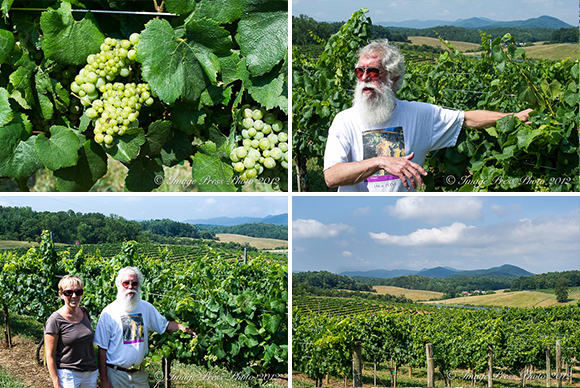
94 acres of vineyards – With Vineyard Manager Dennis Wynne
At the turn of the century, when Biltmore was self-sufficient, the livestock on the farm included Jersey Cattle, Angora Goats, Southdown Sheep, and Berkshire Hogs. They also raised laying hens, ducks, quail, and pheasant, in addition to growing grain crops and various vegetables. They foraged the land and maintained beehives.
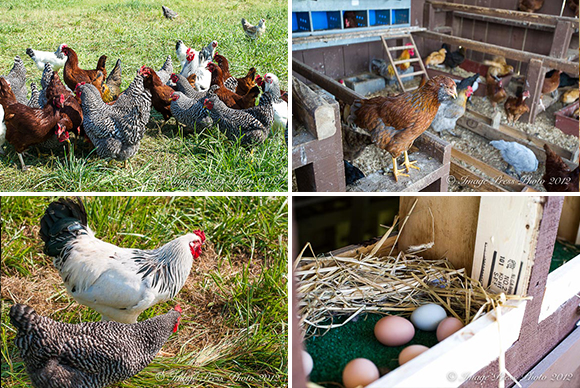
The chickens at Biltmore today include some of the original Heirloom breeds
Today, with the help of Dr. Ted and his team, they raise many of the hearty Heirloom chicken breeds that were at Biltmore during the Vanderbilt years such as Brahmas, Rhode Island Reds, and Barred Rock (or Plymouth Rock). The eggs from these chickens supply the Inn on Biltmore Estate. In addition, they raise Khaki Campbell Ducks. The pastry chefs love to use the duck eggs because they are richer and ideal for baking.
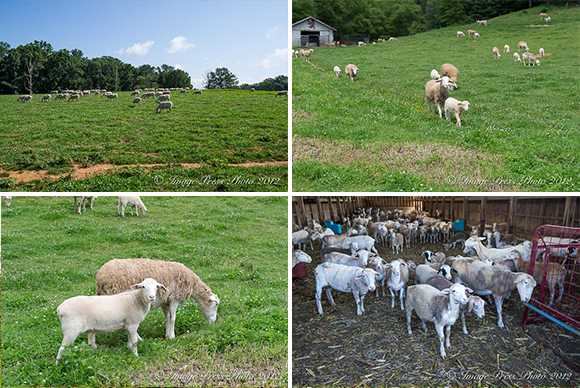
South African White Dorper Sheep are bred to endure warmer climates
There are a total of 1500 head of livestock on the farm today. The South African White Dorper Sheep is the breed now raised on the estate and was chosen because of its tolerance to heat. It is a hybrid of the Blackhead Persian and Dorset Horn sheep. All of the lambs raised for harvest on the farm are used by the chefs at Biltmore. The lamb is very young when harvested (six to seven months) and is very tender and mild in taste. The fat tailed Blackhead Persian sheep is a hair sheep (not wool) and has a more delicate meat and fat flavor that is preferred by the chefs. In contrast, wooled sheep hold glandular secretions which makes the taste of the meat gamey.
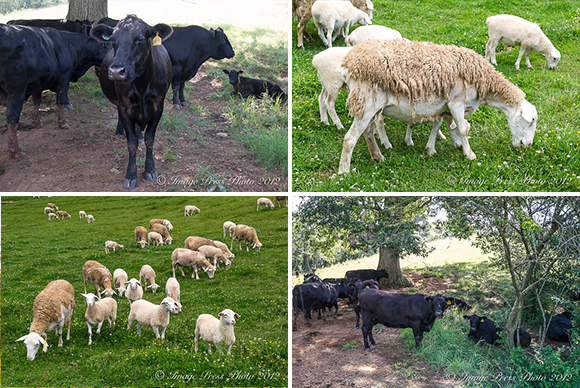
Angus cattle and South African White Dorper Sheep
With all of the talk about grass fed beef, we were interested in the fact that Dr. Ted raises Angus cattle that are pasture raised (and rotated) and grain fed, which is again, favored by the chefs for the flavor profile. Grain feeding the last six to eight weeks increases the marbling and fat profile and therefore, impacts the flavor of the meat. Dr. Ted’s methods for raising cattle are cutting edge and he selects certain lines of cattle that are genetically known for higher marbling. He is also experimenting with crossbreeding Waygu cattle with Angus cattle to create a breed that will be very flavorful and high in marbling. He said the chefs are very excited about the beef and that this is what customers want. All of the cattle harvested from the farm supply the restaurants on the estate.
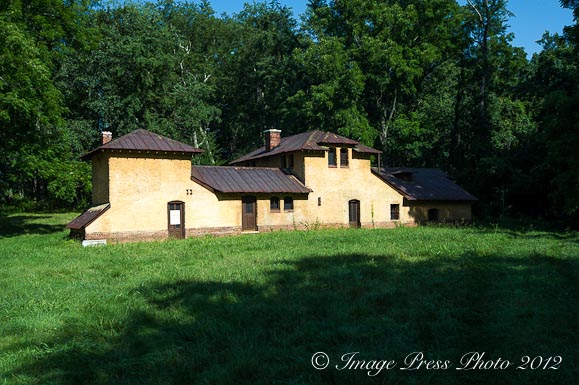
The original chicken brooder house is undergoing a restoration project
In addition to the agricultural program, Dr. Ted is a large part of the preservation program at Biltmore. While driving through the property, we saw many old buildings in various states of disrepair. Dr. Ted said, “These original Vanderbilt structures are National Historic Landmarks. The mission is preservation. We want to keep it authentic. Mr. Cecil is adamant about that. It is expensive to rebuild so we have adaptive reuse. George Vanderbilt would have wanted it this way. We want to keep the integrity of the estate. It’s not Williamsburg. We don’t do costumes.”
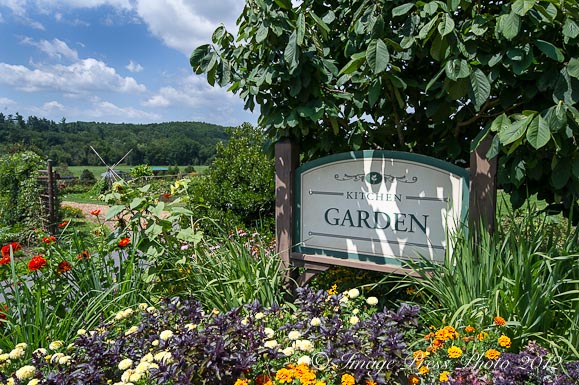
Kitchen Garden
Another important project for Dr. Ted and Biltmore is the Kitchen (or Demonstration) Garden where children can learn about growing fresh fruits and vegetables and use them in cooking. It is so important that we teach children how to cook with real food. Biltmore is a sponsor of ASAP’s school program (Appalachian Sustainable Agricultural Project). Adjacent to the garden is the barn where children and adults can pet and learn about the breeds of animals at the farm. The focus is on educating, preserving, and sustaining for the next generation, and it is evident everywhere we went on the estate.
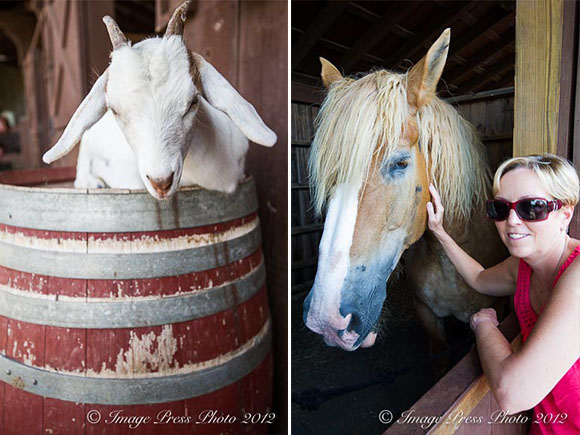
Guests can pet and learn about the farm animals at Biltmore
It is important for all of us to consider what we can do to support the idea of being sustainable and self-sufficient. It is important to our health, well-being, the land, and the future of our children and grandchildren. There is much to be learned from the ongoing mission at Biltmore Estate.
Here is a short video recap of our visit to Biltmore.
I want to thank everyone who showed us a behind scenes view of the agricultural program at Biltmore Estate including Dr. Ted, Melonye Trivett , Eli Herman, Dennis Wynne, and Marissa Jamison. It was great to see theory put in to practice.
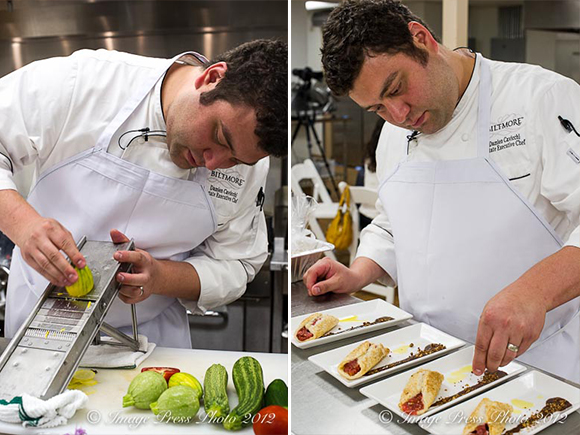
Executive Chef Damien Cavicchi
There is no better way to experience the efforts of these individuals and their team at Biltmore than to enjoy a special lunch at Lioncrest (one of their private venues) prepared with some of the meats and produce raised on property at Biltmore. Estate Executive Chef Damien Cavicchi created a menu for us that highlighted their estate raised lamb, beef, and produce and incorporated other beautiful seasonal ingredients, many from local farms.
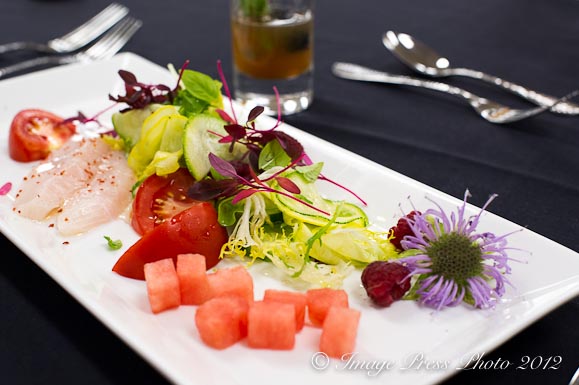
Beautifully plated – Hamachi with Fruit and Vegetable Salad
Chef Cavicchi’s creative dishes used some cuts of protein that are nontraditional in order to use as much of the animal as possible. As Chef Cavicchi said, “with the cost of beef becoming so expensive, we all need to learn how to use cuts that are not as well known. It is important to use the entire animal.”
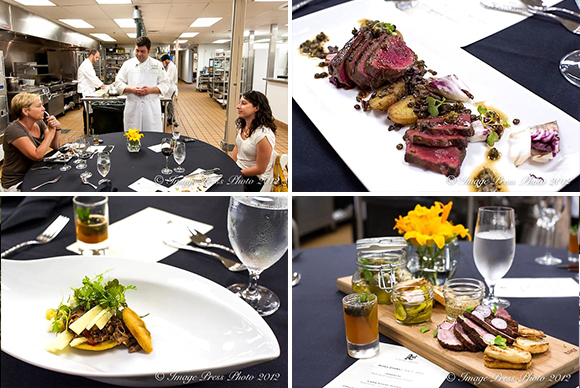
Chef’s Table Lunch at Lioncrest
Our four courses included: Hamachi with Fruit and Vegetable Salad; Lamb Shank Sopes with Tomatoes, Fennel, and Manchego; Grilled Beef Heart and Bison Steak with New Potatoes, Lentils, Radicchio, Capers, and Brown Butter; and Rhubarb Crostada with Milk Chocolate and Olive oil. Each course was paired with Biltmore wines.
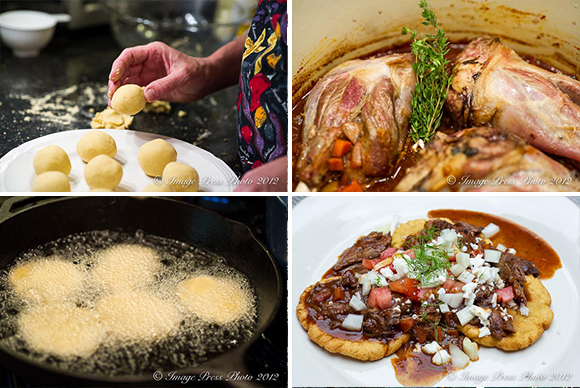
Preparing Lamb Shank Sopes at home
Chef Cavicchi has shared his recipe for the Lamb Shank Sopes we enjoyed at lunch. Perfect for fall, this earthy and delectable sauce with the lamb was even better served the next day. Roasting the lamb in the oven and then cooking it for several hours makes the meat incredibly tender. Including those juices and brown bits from roasting the shanks adds more depth to the sauce. I did not reduce the liquids quite as much as Chef Cavicchi and added a bit more wine at the end to have additional sauce.
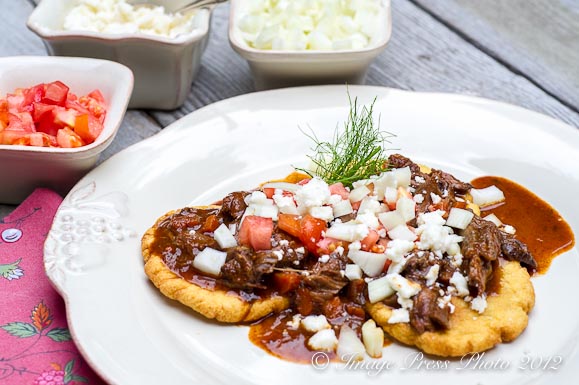
Be sure to serve the lamb shanks with all of the condiments. It is fabulous!
Enjoy!
*Photographs courtesy of Biltmore Estate
This content is protected under International Copyright Laws. Bunkycooks provides this content to its readers for their personal use. No part (text or images) may be copied or reproduced, in whole or in part, without the express written permission of bunkycooks.com. All rights reserved.

Lamb Shank Sopes
Ingredients:
For Lamb:
4 each lamb shanks [shanks are about 1 1/4 pounds each]
1 each medium yellow onion, cut into 1 inch dice
2 each large carrots cut into 1/2 inch dice
4 each cloves garlic, whole
1/3 cup tomato paste
2 cups red wine
3 cups water
6 each fresh thyme sprigs tied in a bundle
1 tablespoon ground coriander
1 tablespoon ground cumin
1 tablespoon chili powder
4 each bay leaves
Salt and red pepper flakes to taste
Vegetable oil as needed
For Sopes:
3 cups masa harina, plus extra for dusting
2 cups warm water
1 teaspoon kosher salt
Vegetable oil for frying
For serving:
Chopped fresh fennel
Chopped tomatoes
Crumbled queso fresco
Fresh lime wedges
Directions:
For lamb:
1. Preheat oven to 400 degrees.
2. Pat lamb dry and coat lightly with oil. Season with salt, place on sheet tray and brown in oven 30-40 minutes, turning once.
3. Set large Dutch oven over medium high heat. Add oil to coat the bottom, along with the onions carrots and garlic. Season with salt and cook until vegetables are soft – about ten minutes – lower heat if necessary. Add tomato paste, coriander, cumin, chili powder and bay leaves. Cook about two minutes over medium heat until deep red color is achieved.
4. Add red wine and scrape up any brown bits. Simmer about five minutes.
5. Remove lamb from oven. Discard any fat, add a small amount of water to sheet pan and loosen any brown bits. Add lamb, browned bits and liquid to Dutch oven along with water, thyme, salt and red pepper. Cover with lid or foil and return to oven. Reduce heat to 350 degrees. Cook 2 1/2 to 3 hours or until very tender.
6. Remove bones, thyme sprigs and bay leaves. Pull apart meat, reserve in cooking liquid overnight in refrigerator.
For sopes:
1. Mix all three ingredients together until a dough forms. Add a little more water if dough seems too dry. Knead about two minutes.
2. Portion dough into golf ball sized balls. Lightly dust a counter surface with masa harina and using a rolling pin, roll dough into a 1/2 inch thickness. Or place dough between two pieces of parchment paper, and press with a plate.
3. To cook, heat about 1/2 inch of oil in heavy skillet over medium-high heat. Cook about one minute on each side until golden brown. Loosely cover with foil and hold in a warm area.
To Serve:
1. Scrape any congealed fat from surface of lamb. Reheat in cooking liquid on stove top. Taste and adjust seasoning. Distribute lamb evenly over sopes. Top with chopped fresh fennel, tomatoes and queso fresco. Serve with lime wedge.
Biltmore Estate Executive Chef Damien Cavicchi